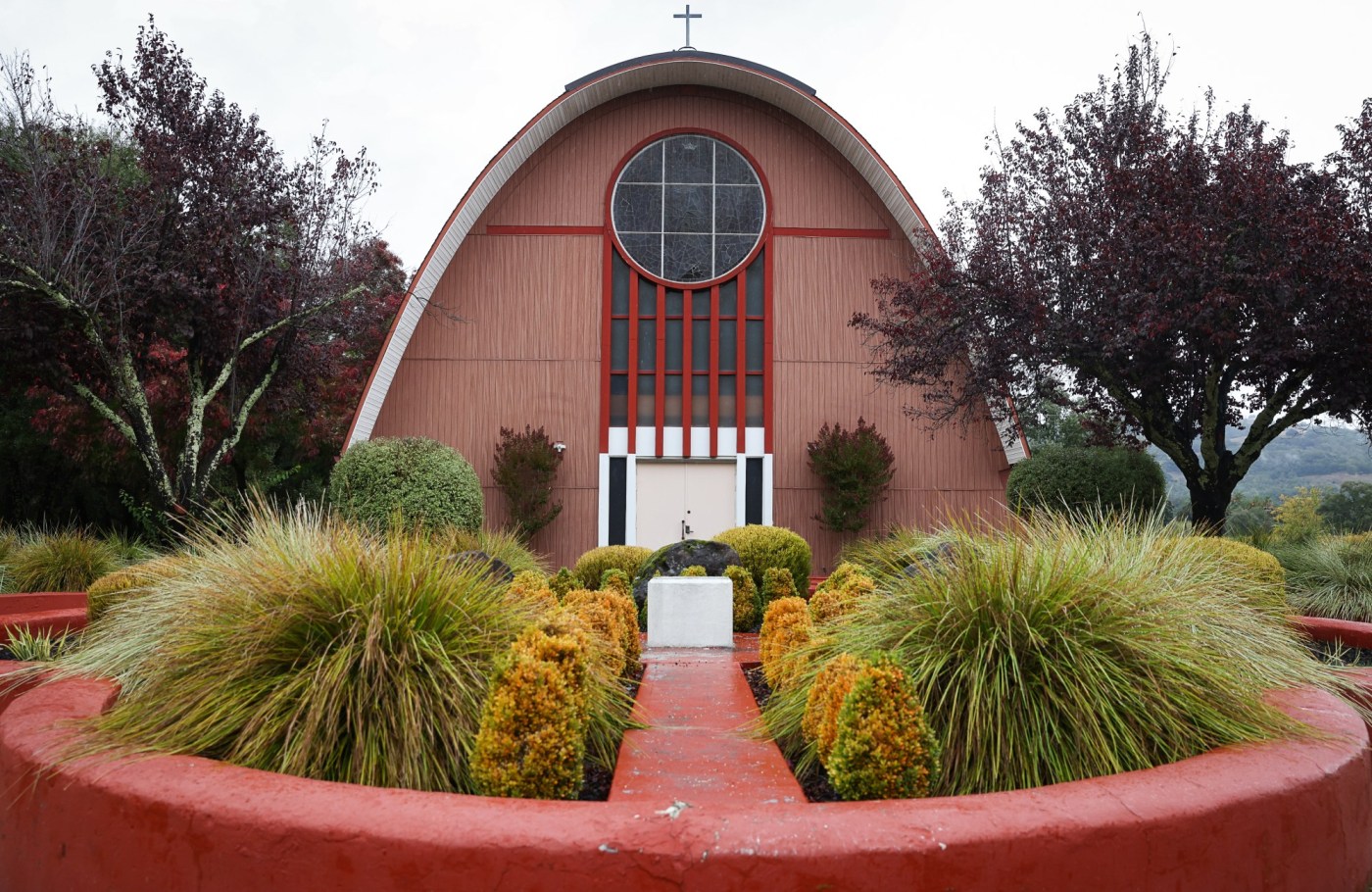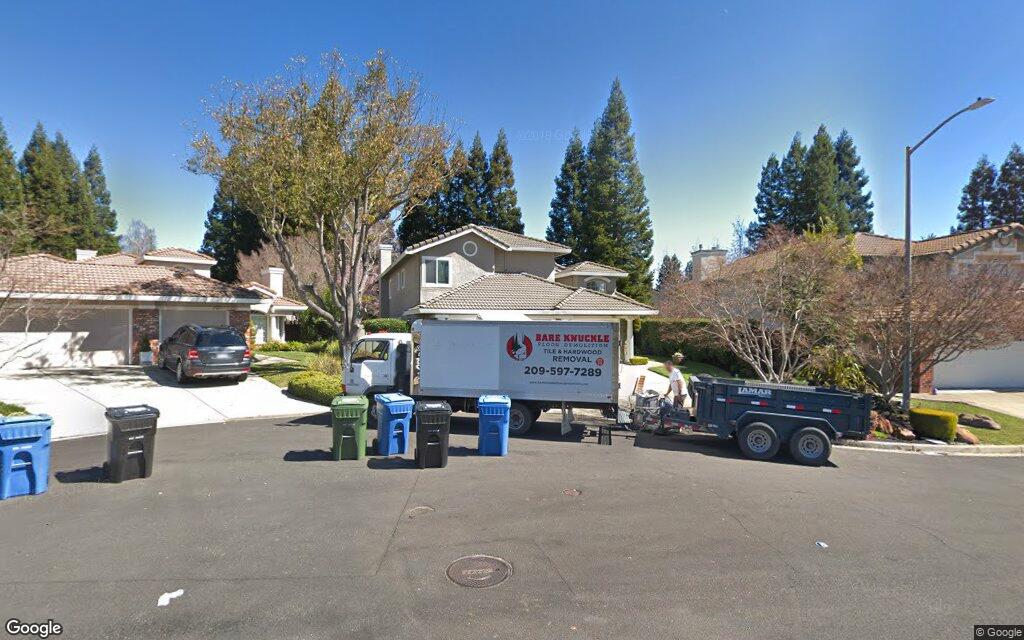The sales prices suggest something modest, even forgettable. But the real estate transactions are weighted with meaning.
The Catholic Diocese of Santa Rosa recently gained approval to sell two small churches — one near Cloverdale, one in Hopland — as part of its Chapter 11 bankruptcy case, a judicial process now 2½ years old.
Related Articles
In the ‘City of Souls,’ the living don’t fear the dead
Bay Area school district discriminated against Jewish students, CDE finds
California Faculty Association denies ‘blatant antisemitism’ claims by Jewish orgs
California school district settles with teacher’s aide over Trump sticker, backpack, attorney says
Will this 75-year-old Bay Area man save our world, a new documentary asks
They probably won’t be the last properties liquidated by the diocese as it continues mediation talks with insurance companies and with survivors of alleged sexual abuse, whose mountain of lawsuits pushed the church’s vast North Coast jurisdiction to file for bankruptcy in April 2023.
“There’s a list of properties that have been identified, and a number of those are in process,” said Bishop Robert F. Vasa, head of the Santa Rosa Diocese. “We’re working with realtors, and in some cases with surveyors. We have three or four other properties in a similar state.”
The diocese needs permission from the bankruptcy court to hire a realtor who can list and market each property and accept offers.
The sales are underway for Our Lady of Mount Carmel on Asti Road south of Cloverdale, and historic St. Francis Church on Spring Street in Hopland. Both are considered “mission churches,” meaning they did not have residential pastors but were served by nearby parishes. Neither has actively been hosting Mass.
Our Lady of Mount Carmel is a postmodern parabola reminiscent of a wine barrel. It was built in 1965 and sits on 1.3 acres. Services there ceased a couple years ago due to physical deterioration; Vasa said the structure is in need of significant repair. The diocese plans to sell it to a buyer named Arturo Jimenez for $450,000.
St. Francis, a vernacular-Gothic-style building constructed in 1897, functioned as a Catholic church for well over a century but ceased services in 2020 in response to the COVID-19 pandemic. A local group headed by John Fetzer, oldest of 11 children born to the couple that founded Mendocino County’s Fetzer Vineyards in 1968, is buying it for $275,000.
The Santa Rosa Diocese is selling this church in Hopland for $275,000 as part of its bankruptcy case. (Christopher Chung/The Press Democrat)
Fetzer told the Anderson Valley Advertiser in April that the group hopes to use it as an event center and community meeting place.
The pending transactions, and others in the works, are necessary, the diocese contends, because it is rapidly running out of money.
The bankruptcy filing signaled that its financial liabilities — especially in light of the 260 claims brought by people who say they were abused by faith leaders in the diocese — equaled or exceeded its assets. But a court document filed in April by the diocese’s legal counsel, the Sacramento-based firm Felderstein Fitzgerald, goes further.
It asserts the church’s “burn rate” for administrative expenses in the bankruptcy case has averaged about $345,000 per month, and that its pool of available funds will fall below $3 million by the end of this year.
The diocese referred to $3 million as its “minimum operating reserve.”
“We’re pushing that to the margin, because we need a certain amount to fund payroll, to fund insurance — both property liability and health insurance for employees,” Vasa said. “$3 million is what our finance officers suggest we don’t want to fall below.
“Is that an ironclad line in the sand? I can’t say with certainty.”
Melanie Sakoda, for one, treats the claim with skepticism.
“I’m from Missouri,” said Sakoda, an advocate for survivors of clergy abuse and Pleasant Hill resident. “If they’re out of money, they need to show me.”
Vasa insisted the diocese is eager to reach a global settlement as quickly as possible, so victims can be paid out without further delay. Sakoda believes that could have happened already if the church were motivated.
“Why would they rather pay attorneys than compensate the survivors who were hurt?” she wondered. “But that’s what they do.”
A month after filing for bankruptcy in 2023, the diocese filed a statement of financial affairs that included its assets and liabilities. That statement set the value of the diocese’s real estate holdings at $1.8 million. But the inventory included only three buildings — a single-family residence that houses the Newman Center at Sonoma State University, the chancery office off Airway Drive in northwest Santa Rosa and the bishop’s residence on a quiet street not far from there.
It did not include active houses of worship. That’s largely because, like many Catholic dioceses, the Santa Rosa jurisdiction moved in 2017 to transfer property titles to individual parishes before filing for Chapter 11, reducing available assets that might otherwise go to creditors. These transfers rely on civil incorporation laws that allow dioceses and parishes to function as business entities, and they have become controversial.
Dan McNevin, who is on the board of Survivors Network of those Abused by Priests, or SNAP, estimates the Santa Rosa Diocese and its parishes own 50-60 church campuses, schools and associated parcels. Their value could stand somewhere between $500 million and $1 billion, McNevin estimates.
“Some of what they own in Wine Country has real value,” McNevin said. “They can sell some of it and come away with a lot more than $3 million. My question is, why not sell the real estate and rent it back? God is the people, not the real estate. The people will come to a rented facility and worship.”
Vasa has said the incorporation of parishes merely follows a century-old edict from the Vatican to ensure church entities are legally identified under civil law in a manner that mirrors their standing under Roman Catholic law.
“It is not shifting control,” he told The Press Democrat in 2022. “It is incorporating into civil law that which is already canonical reality.”
As that debate continues, the diocese is being accused of diverting money that might otherwise have gone into the compensation pool for survivors.
In late July, the committee of unsecured creditors in the bankruptcy case — an advocacy group composed of survivors — filed a complaint alleging the diocese made “fraudulent” transfers to the U.S. Conference of Catholic Bishops and its charitable agency, Catholic Relief Services, over a three-year period preceding the Chapter 11 declaration.
The committee cites 30 monetary transfers totaling $760,000 between 2019 and 2022, and notes that the diocese was well into internal discussions about the possibility of bankruptcy at that time.
As far back as May 2019, according to the committee, Vasa lamented during a meeting of the Diocesan Finance Council that “mounting press surrounding claims of sexual abuse were a danger to the financial stability of the Diocese.” The bishop wrote to the Vatican in November 2021, seeking approval to file bankruptcy. It is among six dioceses in California and 16 nationwide that are currently in Chapter 11 amid a flood of new abuse claims.
In Santa Rosa’s case, the creditors’ committee wants the return of all 30 monetary transfers. So does McNevin, who was molested by a Catholic priest in the Oakland Diocese as a child.
“We see this shifting of money to third parties all the time,” he said. “Oakland sent $106 million to companies they claimed were no longer theirs. Their (unsecured creditors) committee is challenging that. In Wisconsin, it went to a cemetery fund. These are transparent, obvious schemes to get money out of their bank account and shield it from survivors.”
In addition to his position in Santa Rosa, Vasa has “a role and a voice” in the governance of the Conference of Catholic Bishops, the committee says. When he was named bishop of Santa Rosa, Vasa was a member of the Catholic Home Missions Subcommittee and also served on the Task Force on Health Care, both administered by the conference.
Vasa insisted the monetary transfers were not spurred by the looming bankruptcy.
Every year, he explained, the diocese’s 40 parishes take up a dozen or so collections for worldwide relief, earmarking money for missions in places like South America and Eastern Europe. The funds wind up with Catholic Relief Services.
“People write a check to their parish, it’s transferred to us and we then transfer it to (the Conference of Catholic Bishops) for charitable purposes,” Vasa said. “They can call them fraudulent. It just means they took place at a suspect time. But this has been the practice for decades. There was nothing fraudulent on the part of the diocese at all.”
The Conference of Catholic Bishops will defend the transfers in its negotiations with creditors, Vasa added.
“I have an obligation to utilize funds for the purpose they were donated. And (the committee has) an obligation to their clients to pursue that money,” he said. “We’ll see how it works out in the courts.”
You can reach Phil Barber at 707-521-5263 or [email protected]. On X (Twitter) @Skinny_Post.




